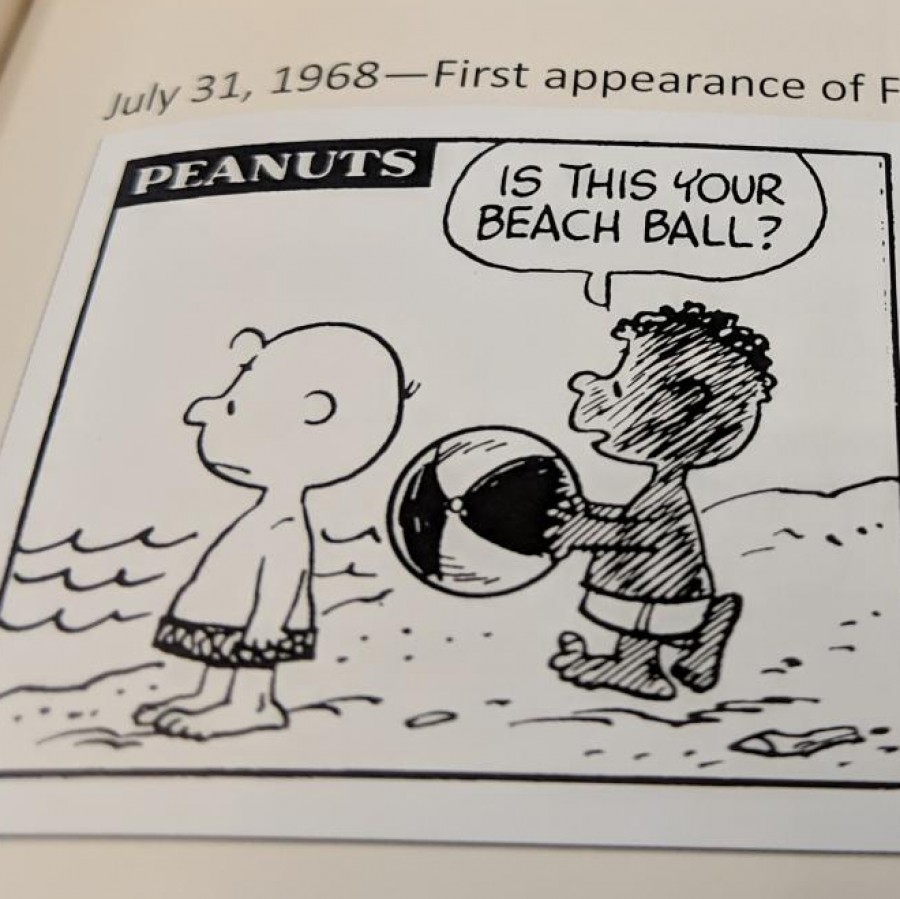Over Thanksgiving weekend, several posts surfaced from Twitter users pointing out possible racism in the classic holiday special “A Charlie Brown Thanksgiving.” Exactly 45 years after its premiere on CBS in 1973, pictures of Charles Schulz’s Peanuts characters gathered at Thanksgiving dinner took the internet by storm. Every single post pointed out the same single detail: the seating arrangement.
After Snoopy throws together a Thanksgiving dinner on a ping pong table, Charlie Brown and his friends have a seat. However, the only black character in the Peanuts, Franklin, is drawn sitting alone on his own side of the table.
Although it may be easy to say that the reason Franklin is sitting alone is a result of racial prejudice, it’s important to first understand the context behind how the character of Franklin came to be.
Franklin Armstrong was created as a response to a letter from school teacher Harriet Glickman to Schulz in April of 1968, shortly after the assassination of Martin Luther King Jr. Glickman wrote, “I’ve been asking myself what I can do to help change those conditions in our society which led to the assassination and which contribute to the vast sea of misunderstanding, hate, fear, and violence.” The letter then urged Schulz to add an African-American character to the Peanuts roster. Despite his fears of appearing to be condescending, Schulz eventually agreed.
That same year, Franklin first appeared in one of Schulz’s comic strips, as a stranger who returns Charlie Brown’s lost beach ball. His debut was groundbreaking for black representation in comic strips since the Peanuts had accumulated such a large following. However, what is most impressive about the breaking of this barrier is that it was far from grand.
The comic strip resonates strongly with the principles of diversity in today’s television, film and theatre because Franklin was just like any other character. His addition didn’t feel forced; Schulz didn’t use unnecessary characteristics to make him “seem more black”.
The beauty of Franklin’s inclusion was in the simplicity. However, the few times that Schulz did address race issues in his comics, he was unapologetic.
Schulz received a large amount of backlash after drawing a comic showing Franklin and white character Peppermint Patty sitting in the same classroom. His publishers wanted Schulz to change the comic before it was published.
In an interview with Michael Barrier, Schulz said, “I remember telling Larry at the time about Franklin—he wanted me to change it, and we talked about it for a long while on the phone, and I finally sighed and said, ‘Well, Larry, let’s put it this way: Either you print it just the way I draw it or I quit. How’s that?’ So that’s the way that ended.”
When returning to “A Charlie Brown Thanksgiving” in 2018, it’s crucial to consider that 45 years have passed, and there is a significantly higher standard for representation in the arts. This could very well be the reason why something this simple such as the seating may just now seem insensitive, but I still believe this choice does not contradict what Franklin stands for. If we were to replace him with any other Peanuts character, chances are we would see nothing wrong with the scene.
In a broader sense, Schulz, the Peanuts, and Franklin can teach us an important lesson: in a constantly progressive social climate, very simple yet powerful steps forward then may be the most misconstrued today.










